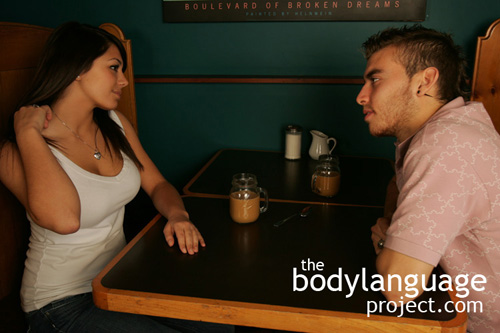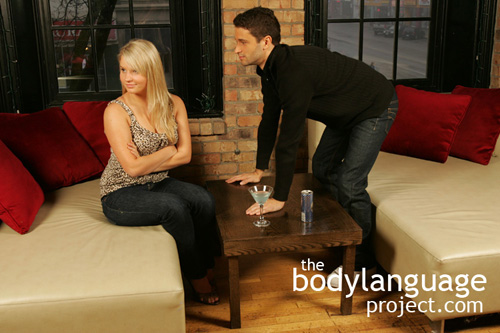
The wrist is a vulnerable part of the body, so when it is flashed, we know that our company trusts us.
What is sexier than an exposed wrist and neck? Well, almost anything I suppose! While these body parts aren’t inherently sexy on their own, they have roots as visceral responses linked to submissiveness. These two areas of our body contain many nerve endings so are very sensitive. A kissing on the neck can run shivers throughout the body and send a woman into fits. Our wrists, to a degree, but our neck in particular, is an extremely vulnerable part of our bodies which we defend rigorously if attacked and the genes we have as a result of eons of evolutionary history supports this. One well placed bite to the throat by cat like predators instantly immobilizes their prey. In a dating context, women show their trust and willingness to submit to men, by revealing their necks and wrists. You can imagine a woman might seductively remove her long hair by bringing it over to one side, or twisting it around a finger then flexing over flashing her neck. She might tilt her head to the side by dropping her head and bring her hand up to carefully stroke and caress the skin on her neck just lightly, so as to draw a man’s eyes on her. In more over cases, woman can even display sexually by coming so close that the neck invites a kiss.
Exposed wrists can come in many forms. They might be revealed in an obvious fashion by placing them on a table with palm up. Added emphasis maybe placed on them by stroking them with a hand or even with the wrist of the opposite arm. Self touching also shows arousal and shows that someone is thinking about being touched, only in this case she is using self touching to satisfy the needs that are currently not being met by the person she fancies. Wrists can be exposed in less obvious ways as well, and these are called wrist flashes. Whenever the palms come up the wrists can flash. Palm flashes are also form of submissiveness and also honesty as we have hit on before. The more flashes, the more interested is delivered. Other incidences of flashes appear as a woman, pulls up a sleeve, plays with her earlobe, or strokes her hair.
Above: While constructing the photographs for the book Body Language Project: Dating, Attraction and Sexual Body Language we ask Julie to show female interest through a neck display. Neck are sensual in dating and attraction because they are full of nerve endings and are vulnerable so when exposed could lead to certain death. While this might not sound sexy in the least, a neck exposure is a signal of the desire to appear subordinate to a more dominant suitor. Neck displays are thus a way of saying that a women is prepared to accept a man. Learn more about sexual body language of women by picking up a copy of the Ebook Body Language Project: Dating, Attraction and Sexual Body Language today!






